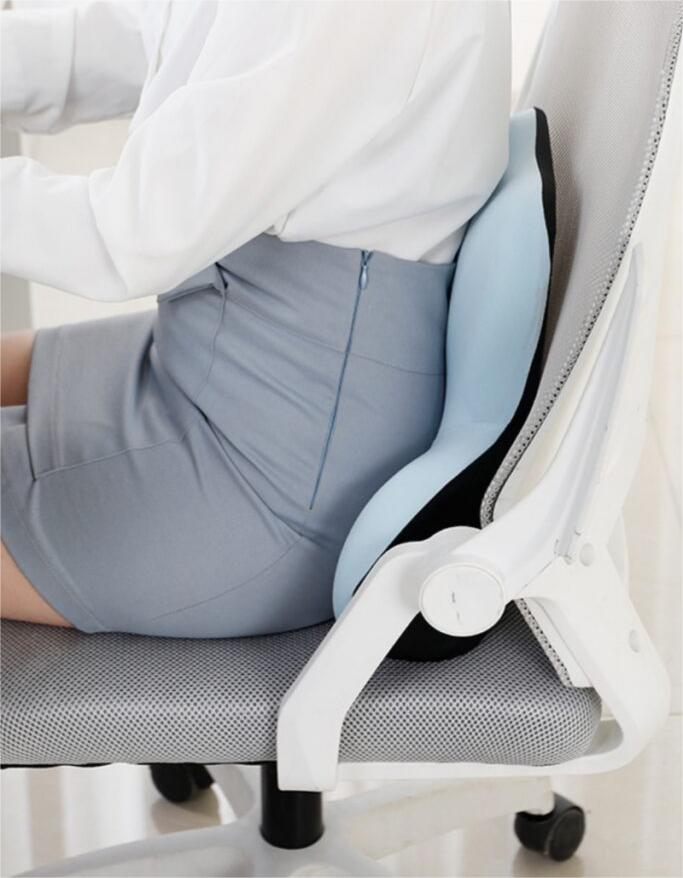In today’s fast-paced business world, the quest for increased productivity never ends. But what if the key to unlocking your team’s full potential isn’t found in complex management strategies or cutting-edge software, but in something as simple as a chair? Welcome to the world of ergonomics in the workplace, where the right lumbar support can be the unsung hero of office efficiency. At aimyComfort, we understand that a comfortable employee is a productive employee. In this comprehensive guide, we’ll explore how proper ergonomics, particularly lumbar support, can significantly boost productivity in your workplace. Whether you’re an HR manager looking to improve employee well-being, a business owner aiming to increase output, or an office worker seeking relief from back pain, this article will provide you with valuable insights and practical solutions. Let’s dive into the science of comfort and discover how it can transform your work environment.

Understanding Ergonomics in the Workplace: The Foundation of Productivity
Before we delve into the specifics of lumbar support, it’s crucial to understand the broader concept of ergonomics in the workplace:
- Definition: Ergonomics is the science of designing the workplace to fit the worker, not the other way around.
- Goals: To reduce discomfort and risk of injury while improving productivity and job satisfaction.
- Scope: Includes everything from chair design to desk height, monitor positioning, and keyboard placement.
Implementing ergonomic principles in the workplace is not just about comfort; it’s a strategic move to enhance overall productivity and employee well-being.
The Link Between Lumbar Support and Productivity
Now, let’s focus on a key aspect of ergonomics in the workplace: lumbar support. Here’s how proper lower back support contributes to increased productivity:
- Reduced Pain and Discomfort: Proper lumbar support helps maintain the natural curve of the spine, reducing strain on back muscles.
- Improved Posture: Good lumbar support encourages correct sitting posture, which can increase energy levels and focus.
- Decreased Fatigue: By supporting the spine, lumbar support reduces the effort required to maintain posture, leading to less fatigue over long work hours.
- Fewer Breaks Needed: Employees with proper support may need fewer breaks to stretch or relieve discomfort.
- Enhanced Concentration: Comfort leads to better focus and concentration on tasks.
Recent studies have shown that implementing proper ergonomics, including lumbar support, can lead to productivity increases of up to 17% in office environments.

Identifying the Right Lumbar Support for Your Workplace
Not all lumbar support is created equal. Here’s how to choose the right support for your office:
- Adjustability: Look for chairs or lumbar support cushions that can be adjusted to fit different body types.
- Material: Opt for breathable materials that provide firm yet comfortable support.
- Shape: The support should follow the natural curve of the spine (S-shape).
- Size: Ensure the support covers the entire lumbar region (lower back), typically 6-8 inches in height.
- Integration: Consider chairs with built-in lumbar support for a seamless ergonomic solution.
At aimyComfort, we offer a range of ergonomic chairs and lumbar support products designed to meet diverse workplace needs.
Implementing Ergonomic Solutions: Beyond Lumbar Support
While lumbar support is crucial, it’s just one piece of the ergonomic puzzle. Here are other factors to consider:
- Desk Height: Ensure desks are at the right height (28-30 inches for most adults) to prevent hunching or reaching.
- Monitor Position: Screens should be at eye level and about an arm’s length away to prevent neck strain.
- Keyboard and Mouse Placement: These should be within easy reach to reduce shoulder and arm strain.
- Lighting: Proper lighting (300-500 lux for office work) reduces eye strain and associated headaches.
- Regular Movement: Encourage employees to take short breaks and move around every 30-60 minutes.
Remember, ergonomics in the workplace is about creating a holistic environment that supports employee health and productivity.
The Economic Impact of Ergonomics in the Workplace
Investing in ergonomics, including proper lumbar support, isn’t just good for employees—it’s good for the bottom line:
- Reduced Absenteeism: Proper ergonomics can reduce work-related musculoskeletal disorders, a leading cause of workplace absenteeism.
- Lower Healthcare Costs: Preventing injuries through ergonomics can significantly reduce company healthcare expenses.
- Increased Retention: Employees are more likely to stay with companies that prioritize their comfort and well-being.
- Enhanced Reputation: Companies known for good ergonomics often attract top talent.
Recent studies have shown that for every dollar invested in ergonomic solutions, companies can expect a return of between $2 and $10, depending on the industry and specific interventions.
Overcoming Challenges in Implementing Ergonomic Solutions
While the benefits of ergonomics in the workplace are clear, implementation can face challenges:
- Cost Concerns: Address this by highlighting the long-term savings and productivity gains.
- Resistance to Change: Educate employees about the benefits and involve them in the process.
- One-Size-Fits-All Approach: Recognize that different employees may need different ergonomic solutions.
- Lack of Knowledge: Provide training on how to properly use and adjust ergonomic equipment.
Overcoming these challenges is key to successfully implementing ergonomic solutions and reaping the productivity benefits.
Measuring the Impact of Ergonomic Improvements
To justify and refine your ergonomic investments, it’s important to measure their impact:
- Productivity Metrics: Track output before and after implementing ergonomic solutions.
- Employee Surveys: Gather feedback on comfort levels and perceived productivity.
- Absenteeism Rates: Monitor changes in sick days related to musculoskeletal issues.
- Error Rates: Check if improved comfort leads to fewer mistakes.
- Long-Term Health Outcomes: Track reductions in workplace injuries over time.
Regular assessment allows you to fine-tune your ergonomic strategy for maximum productivity gains.

Conclusion:
Ergonomics in the workplace, particularly the use of proper lumbar support, is far more than a comfort issue—it’s a key driver of productivity and business success. By investing in the right ergonomic solutions, you’re not just supporting your employees’ backs; you’re supporting their ability to perform at their best. From reduced pain and improved focus to significant economic benefits, the advantages of prioritizing ergonomics are clear and compelling.
At aimyComfort, we’re committed to helping businesses create more comfortable, productive work environments. Our range of ergonomic solutions, including chairs with superior lumbar support, are designed to meet the diverse needs of modern workplaces. Why not explore how our products can help boost your team’s productivity?
Take the first step towards a more ergonomic, productive workplace today. Your employees—and your bottom line—will thank you.
[Internal Link: Discover more about office wellness in our article “10 Simple Stretches to Relieve Workplace Stress”]
Learn more about the economic benefits of ergonomics from the Occupational Safety and Health Administration (OSHA) (https://www.osha.gov/ergonomics)

